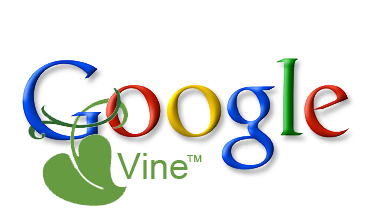5 Ways Google Could Break into Social
We've seen some spectacular social failures from Google. Here are five elevator pitches to help Google to get social right.
We've seen some spectacular social failures from Google. Here are five elevator pitches to help Google to get social right.
There always seems to be a lot of talk around Google trying to break into social networks and their failures to date to do so. I thought it would be fun to come up with some ideas that Google could use to break into the social game.
Who knows, maybe Google will like them enough to send me a bonus. (Note to Google, if you need my mailing address, just let me know!)
1. Google Vine

Amazon knows a thing or two about how important reviews are to cultivating a community and driving sales. No doubt that Google sees opportunities in this as well, especially with it’s local push and the rise of universal results.
Google is known for borrowing from others, sometimes even when they don’t want them to, all the while hoping their own users will step up to the plate and write reviews on Google Place pages.
I propose that Google take a page out of Amazon’s playbook and incentivize this process by starting Google Vine (trademark not even close to pending). While Amazon can easily give away promotional goods and advanced copies of items in return for reviews, perhaps Google could give away AdWords credits.
Even better, Google could work with existing Place Pages and visitors to said pages within a given location range. These logged in Google accounts could receive a coupon from Google for this particular place in exchange for writing an honest (positive or negative) review of their experience on the Place Page after they visit.
This would incentivize users to not only visit local place pages, but return to these pages and interact with them. Because the coupons would be issued by Google, the users would feel more thankful to Google than the place the coupon was for and be more likely to not give a biased review.
If Google wanted to take this even a step further (and make money on it at the same time), they could run a Groupon/Living Social type deal on the backend using Place Page owners to fund the coupons.
2. Google Latitude + Follow Up
You know what else Amazon is really good at doing? Automated follow up which asks for interaction. I can’t tell you how many times I’ve ordered something from Amazon, used the product and completely forgotten about writing a review, even if the reviews are what helped my purchase decision in the first place.
No fear though, because Amazon will shoot me an email in a few days thanking me for my purchase and asking for me to write a review on it with a handy clickable link and everything.
Guess what Google has for all of their accounts? Email addresses, duh.
Even though Google isn’t selling a direct product, it does know when one of their users checks in to a certain location with Latitude. They also know if the certain location has a Place Page profile built out and what category they fall into (restaurant, retail store, etc). So why not combine all this knowledge and send their users a follow-up email asking them to review whatever place they checked into?
To avoid too much email, you could consolidate and only follow-up on certain categories of places, or multiple checkins to a location (return visitors equal trust) or even better, give users the option to only receive follow-ups on certain topics of their choosing and their frequency. Google gets more reviews and Latitude users get more interaction besides blinking on a map to their friends.
3. Recommend Followers
Currently, users see contacts “socially” integrated into the Google SERPs if that user has done something (like +1 a listing). You can see this in the top result above. I guess that’s great and all but aside from being reminded that my boss also likes a pizza place that I like, it really doesn’t do me much good from a social networking standpoint as it doesn’t encourage any behavior other than a “Me too!” reaction.
Well, what if Google were to recommend people for me to follow, not unlike how Twitter does? Google would know where I checkin (via Latitude), what sort of sites I +1, what sort of Places I review, and they even know a thing or two about the keywords I look up.
Put that information together and I bet they could recommend some interesting people to interact with. It would allow me to build my own Google social profile followers by selectively expanding my network instead of the auto-friend option that Buzz tried to do based off all my non-friend email interactions.
And if they’re really desperate for cash, Google could even charge people via PPC to promote themselves and their Google Profile Pages in this manner. You know, like how Twitter does it. Learn from other’s social successes, Google — they’re learning plenty from your social failures.
4. Integrate +1 Into Sites
Granted Google has already stated that they will be doing this at some time in the future most likely, but I can see no point in waiting to at least get the ball rolling.
Seriously, a month ago the every Internet marketer in the land was chomping at the bit to talk about Google +1. But not only has it not meant the death of the Facebook Like button, it’s turned out to be quite an ignorable snoozefest — a digital yawn if you will.
It’s not too late! In contrast to Google Buzz, people don’t readily hate +1 yet, mostly because it’s so inobtrusive. But that blend into nothingness will make it more like “What’s the point?” the longer time goes on (remember Wave?) and it will most likely fade into obscurity rather than secure a social stake unless something changes quickly.
The solution is simple: build a +1 button and make it embeddable on every single page on every single site and do it now.
Why? What will it do? There are about a million answers to that so let’s go for the simplest one.
An embeddable +1 button will do the same thing that the button in the SERP’s does. It will mark up the SERPs for you and your friends. Couple this with my aforementioned ideas and you could really start to have something brewing here.
5. Pull it All Together!!

Google Profile pages are a great place to start. If I have a Google account, then all my pages (YouTube, Blogger, Picasa, Groups, etc) should have a central profile that everything revolves around but also allows me to interact with others because a nice static page listing all my Google services isn’t very socially enticing. In short, Google has lots of social aspects that are too spread out to be very effective for building any sort of community.
I don’t care if they call it Google Circles or Google Hula Hoops or Google Fruity Loops. They’d probably be better off not naming it anything and just start rolling stuff together.
Interestingly enough, it seems like they might be looking to do something just like this. In a new patent published last week Social Messaging User Interface they seem to want to work on some sort of centralized hub.
If the sketches are to be an example, it looks like they’ll be focusing on mobile and hopefully not ignoring the social circles we’re already a part of while bringing their own resources into the mix. Who knows, they just might get this right yet!
So what do you think? Good ideas or bad ideas? How would you change them?